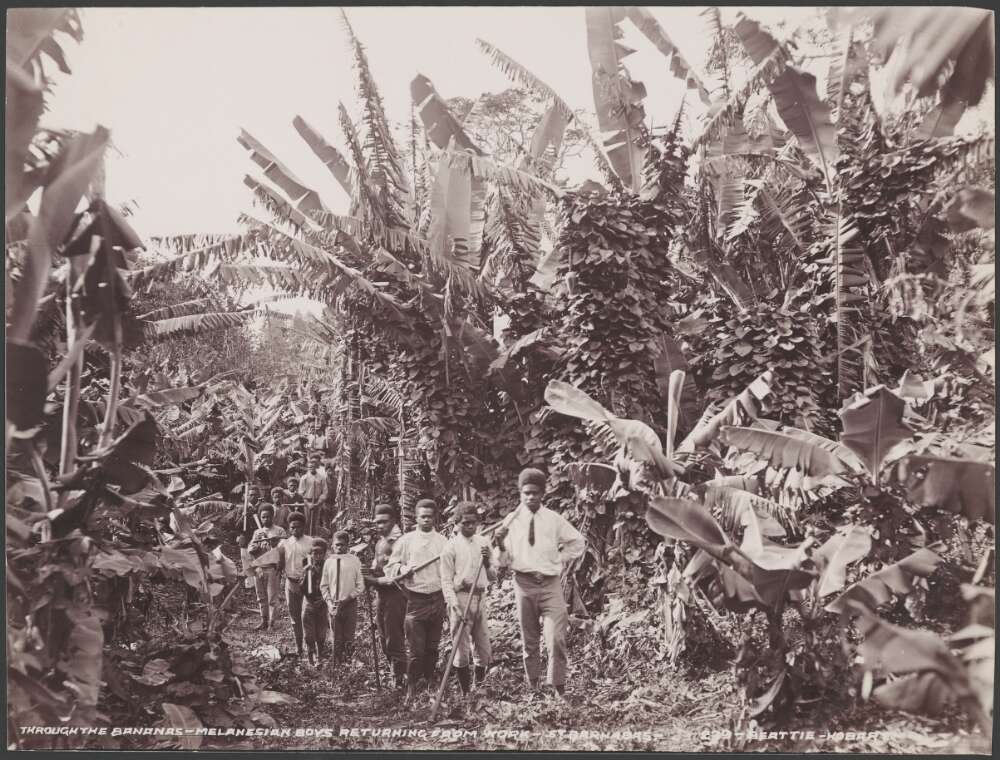
Discover items written in your language in the National Library’s collection with our Catalogue’s Advanced Search. Click in the ‘Language’ field, and start typing a language name, such as ‘Samoan’. The language code, ‘smo’ for Samoan is automatically provided in a dropdown menu. These codes group and connect these records to guide your search. Click the ‘Find’ button to see your Library item results in the Samoan language. This type of language searching will list items across many formats as shown on the right menu, such as books, journals, music and pictures.
Some examples of resources in other languages include Marshallese (language code:mah), Tongan (language code:ton), Tok Pisin (language code:tpi), Maori (language code:mao) and Tuvaluan (language code:tvl). There are many more but not all languages are represented in the collection. If you’re not sure where to start, please Ask a Librarian.
Sometimes language results can overlap – this can be due to searching several language codes at once, or if multiple languages are covered by the same publication. This often occurs with dictionaries, religious titles or regional works. If your results include several languages, the menu on the right side will list these beneath the ‘Language’ option. Click the relevant language to further narrow the results.
The Catalogue Help page illustrates these steps to guide you in finding items in your language.
Trove Resources in your language
Trove is a discovery service which showcases records from many Australian libraries, museums and other cultural collecting institutions. To conduct a basic search from the Trove homepage, click into the white search bar and type the name of your language. Starting with this quick keyword search gives an insight into the materials and coverage. From the search results, choose a category such as Images, Maps & Artefacts. To refine, select ‘Advanced search’ on the right-hand menu and navigate to the ‘Language’ dropdown option and select ‘Tok Pisin’ or other options as applicable. Each category will list different languages, because these reflect the content of items within the respective formats.
The Trove Search Help page describes language search options and suggests searching for a keyword in that particular language. To continue a search for Tok Pisin material, create a basic search from the Trove homepage for the work ‘pikinini’ (child). This displays results across many categories. Another way to refine search results is to use the term ‘language:’ prior to the language name. For example, a basic search across all Trove categories for ‘language:Tuvaluan’ gives results which are very focused on linguistic materials.
Some search results are historical, such as the digitised issues of Harina, a Motu language journal published by the London Missionary Society. Other older publications include the full-text articles in Trove’s Digitised Newspapers and Gazettes category. Several newspapers from Papua New Guinea can be viewed by their title listings, such as the Papua New Guinea Post-Courier (Port Moresby: 1969 – 1981). This newspaper coverage is provided within certain publication dates for copyright reasons, more modern news sources available through eResources are described above.
Recent news in the Pacific
The National Library provides registered users with access to recent newspapers and magazines through subscription databases. Local and international titles relevant to the Pacific region are available through the eResources portal, with individual databases listed under the Browse eResources tab. More information on eResources is available in our Getting Started Research Guide.
- PressReader gives access to over 7,100 news and magazine publications in over 40 languages from more than 80 countries.
Articles are presented with full-colour images and dynamic page-turning with the same appearance as the printed publications. Search for countries of interest to see stories published internationally, or choose individual titles such as Bloomberg Businessweek (Asia), Fiji Sun, mailife, and PNG Now.
Current coverage from the past 3 months can be automatically translated with one click to 19 languages, including French and Japanese.
- Newsbank Access Global is a major database with access to articles from over 7,000 news sources. Articles are text-based, with select titles providing full-colour images. Search for articles with keywords or by publication title such as Fiji Times, Marshall Islands Journal, or PACNEWS (Fiji). Refine by region with Map Search to see the BBC Monitoring Selected Reports for countries in the Pacific. Depending on the title, newspapers can be viewed or searched from the past few months or years.
